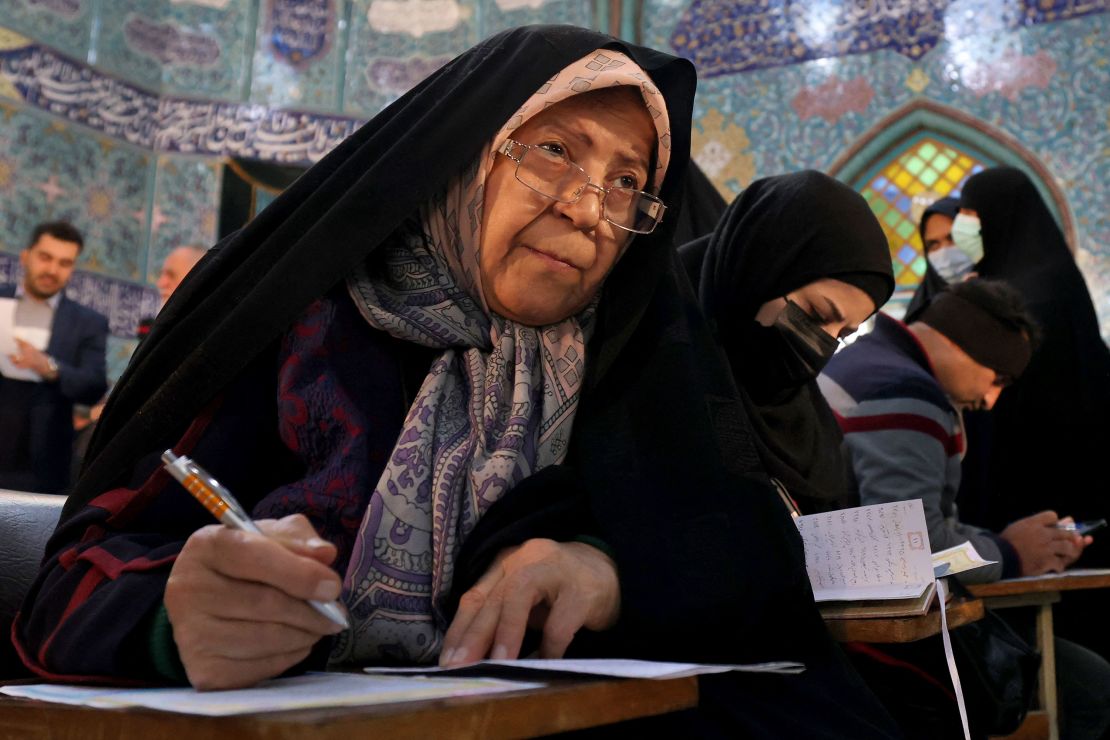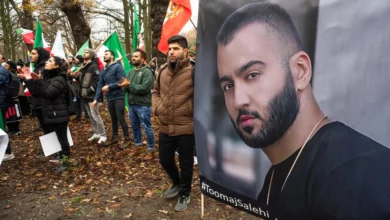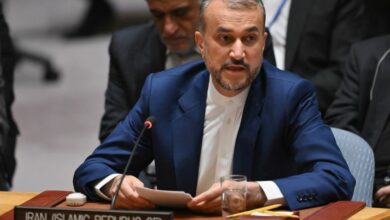
Out of Iran’s 61 million eligible voters, some 25 million cast their ballots in parliamentary and Assembly of Experts elections that took place on March 1, Iran’s state news outlet IRNA said.
The announced turnout is not final, experts say. And while only 41% of voters came out, according to official data, “the real turnout is likely lower although it is impossible to know at this stage,” wrote Alex Vatanka, founding director of the Iran Program at the Middle East Institute in Washington, DC, adding that “in this round, the vetting was among the most extreme.”
Turnout was low despite Iran extending the voting time three times, and despite weeks-long efforts by officials to boost participation levels ahead of the polling date.
The turnout also comes as Iranians grapple with a tumbling local currency, a crippled economy and widened crackdown on dissent, which rights groups say only intensified after the 2022 protest movement sparked by the death of Mahsa Amini in police custody.
Iranian officials and state media however hailed the turnout as a triumph. The figure is a win against “the biggest election boycott campaign in the last 45 years,” said Iran’s semi-official Fars news agency on X, adding that the boycott was orchestrated by “foreign enemies and their internal followers.”
President Ebrahim Raisi on Saturday told Iranians who voted that their participation was a “zealous blow to Iran’s obstinate opponents.”
Lowest turnout since the 1979 Revolution
While not as low as some polls published in state media initially speculated, the turnout so far announced is lower than any legislative or presidential election held since the Islamic Republic’s founding in 1979.
It is unclear if the announced 41% turnout will sink further in the coming days, with some candidates in the parliamentary election going to a runoff.
Recent elections have generally seen increasingly low rates of voter participation. Iran’s last parliamentary election in 2020 saw a turnout of 42.57%, and its last presidential election in 2021 had a turnout of 48.8% – both were the lowest since the establishment of the Islamic Republic.
Some 15,000 candidates competed last week for the 290-seat parliamentary election, and 144 ran for the 88 seats of the Assembly of Experts.
Preliminary results show the election of mostly hardline politicians, including President Ebrahim Raisi who was re-elected to the Assembly of Experts – which has the power to appoint the Supreme Leader, the highest political authority in Iran.

Key takeaways
Several Iranians in Tehran have cited economic conditions and a lack of trust in leadership as reasons for not voting.
In a shocking move, Iran’s former president Mohammad Khatami refused to cast his vote on March 1. The reformist president has previously urged the Iranian government to be more lenient with protesters amid the 2022 nationwide demonstrations. Azar Mansouri, an Iranian reformist politician, over the weekend confirmed Khatami’s refusal to vote.
“His (Khatami) critical stance is indicative of the mood in the reformist camp that is by now nearly extinguished as a channel for criticism of Khamenei,” Vatanka wrote.
International watchdogs previously slammed Iran for holding elections that are neither free nor fair, marked by a vetting process that restricts the types of candidates permitted to run.
This year, Iran’s Guardian Council – a powerful 12-member council charged with overseeing elections and legislation – had disqualified thousands of candidates from running for parliamentary seats and barred former moderate President Hassan Rouhani from running for the Assembly of Experts.

Other politicians who were once leading election charts saw their popularity drop. Mohammad Bagher Ghalibaf, Iran’s parliament speaker and former Revolutionary Guards air force commander, seemed to lose some votes, coming fourth in this year’s election after his popularity peaked in the 2020 parliamentary election.
Ghalibaf’s fall down the chart shows that even among those who did vote, they are “taking a more striking position against perhaps incumbents and even pragmatic conservatives,” Sanam Vakil, director of the Middle East and North Africa Programme at the Chatham House think tank in London, told CNN.
Vakil added that another sign of voter discontent was the high number of spoiled ballots, showing that there were protesters even among those who voted.
“The real question now is what comes next,” Vatanka wrote, adding that for a majority of Iranians this election was “a referendum on the future of the Islamic Republic.”
“Few reformists chose to or were able to run in these elections and those that did fared badly, marking the loss of the public’s faith in the ability of gradual reform in the Islamic Republic,” he added.
This election “tells us where the system is,” Vakil told CNN, adding that in an attempt to maintain cohesion for succession and the existing composition of the Islamic Republic’s institutions, the system has been “purged” of elites who may have become more pragmatic or moderate over time.
CNN’s Rosa Rahimi contributed to this report.




